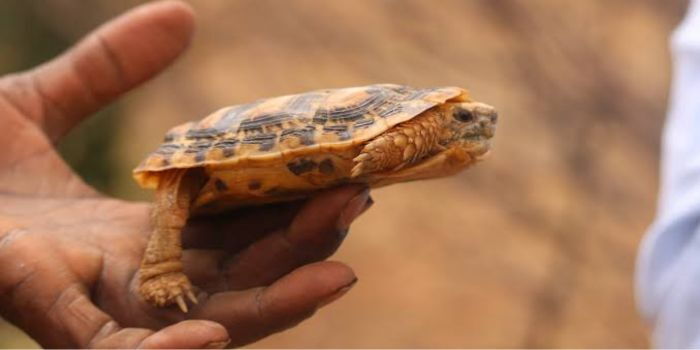Pancake Tortoises: How These Tiny Pets Could Cost You Life Imprisonment

Three people in Marimanti, Tharaka Nithi, are facing up to life in prison or Ksh20 million in fines after being caught in possession of live pancake tortoises.
The arrests were made on Saturday, August 10, in a joint operation between the Kenya Wildlife Service (KWS) and the National Police Service (NPS), after which the rare reptiles were secured.
According to the International Union for Conservation of Nature (IUCN), pancake tortoises are critically endangered, which means that they are facing an extremely high risk of extinction in the wild.
As such, Kenya has developed a 10-year National Recovery and Conservation Action Plan (2025-2035) to address these threats, focusing on community engagement, habitat preservation, and law enforcement.
Unlike most tortoises that have heavy and solid shells, the pancake tortoise’s shell is soft, flexible and lightweight.
This anomaly puts the creature at a higher risk for different reasons, including a booming illegal international pet trade.
Speaking toAfricanews, the CEO of the Kenya Wildlife Training and Research Institute relayed that international markets like the United States
“Some countries in Europe and the US use the pancake tortoise as pets, and they smuggle them,” he stated.
“We have farms that farm for pancake, but some individuals get them from the wild to the international market, so illegal trade is one of those major challenges that is facing their conservation and also habitat loss because of a lot of growing human population, their habitat loss, and that also affects their conservation.”
Before the trade was criminalised, the sale of these tortoises would go for about Ksh5,000, but in the black market, smugglers can fetch at least 10 times more, over Ksh200,000.
However, some private farms still rear these tortoises that grow to the size of seven inches (18cm) since before this restriction was introduced in 2019, even though they can no longer sell them.
They have a quite slow growth cycle—between 5 and 9 years—and can only lay one or two eggs annually, hence why their production rate is very slow. Their eggs take four to six months to hatch.
In the wild, theyinhabit rock crevices in dry areas and are excellent climbers, leading to another challenge they are facing: habitat loss through agriculture, overgrazing, land development, and frequent bushfires that destroy the rocky environments they depend on.



